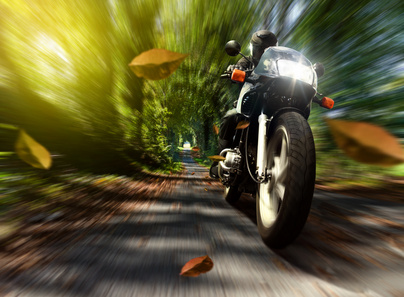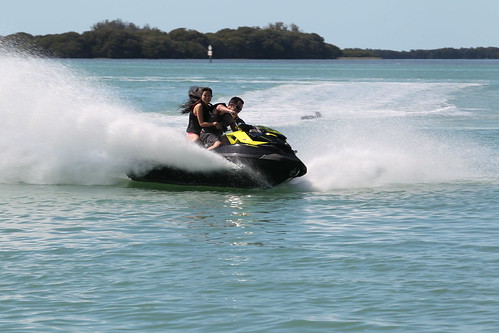Hello everyone. This is Jon again from Whittier Fun Center. I thought that today, I'd write about a topic that always comes up when talking about riding a motorcycle. It's one of the biggest worries involved with a commuter motorcycle, or is it?
Every time I tell someone that I ride a motorcycle, they always have the same questions. One of those questions is what I do when it's raining. Well that's simple. I ride. For me, my motorcycle is really my only mode of transportation. Sometimes I have a car available, but most times I do not.
The biggest fear of riding in the rain is that the roads are slippery, especially during the first rain, when all the oils are coming up off the road. Another concern, if not a fear, is the potential to be completely drenched by the time you get to where you're going.
When riding in the rain, there's a few things that you want to keep in mind to stay safe:
- First, yes, the roads are very slippery. Even the slightest blip on the throttle could send you somewhere you don't want to go. That's why it is very important that you want to roll on the throttle as smooth as possible. You don't want any jerky movements in your hands. The biggest deal is taking off from a light or stop sign. Be extra careful for painted crosswalks. Take off slowly and smoothly as if you have nowhere to go.
- Second, always ride the dry path. What I mean by this is that if possible, ride in the tracks of the car or bike in front of you. What happens is their tires grab the water and throw it outward, thus creating a mostly dry surface. You will be able to grip better and have better response when doing this.
- Thirdly, try to pick up some rain gear. It's always good to have water resistant gear on during a wet ride. For those of you like me with open face helmets, if you wear a mask, don't breath too hard as it will be soaked and act as a suffocation device. Also, water resistant gear will allow you to be more comfortable and you'll also be dry when you get to where you're going .
- Lastly, and this is a personal preference, but it works, is to have some sort of yellow headlight at your disposal. I like to use yellow headlights because they cut through rain and fog and just about anything that hinders your vision with a normal bulb. The factory halogen or HID might not be as effective, as they shine the light off of whatever is in front of you, rather than cutting through it. I wouldn't suggest ALWAYS running a yellow bulb, but to have it as a high beam or fog light.
These have been my suggestions about riding in the rain. I hope it helps some of you out or opens your eyes to it a little bit more. Thank you for reading.
If you have any questions about riding in the rain, feel free to contact me. My information is down below.
Jonathan Salas
Internet Sales
Whittier Fun Center
14043 E. Whittier Blvd
Whittier, CA 90605
(562)945-3494 x19
internetsales@wfuncenter.com
















